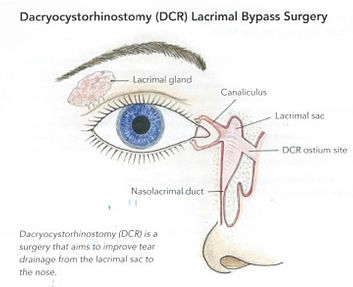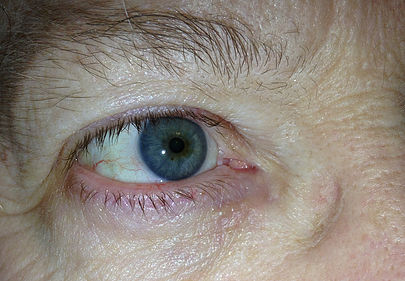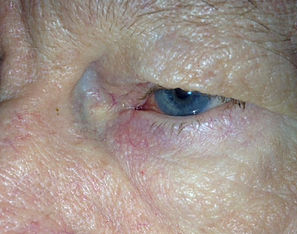Tearing (Watering Eyes)
Overflow tearing usually happens because a tear duct in a baby’s nose is blocked. A membrane (piece of tissue) at the end of the tear duct should open before birth. If it stays closed, tears cannot drain properly through the duct into the back of the nose and throat. Instead, they flow out of the eye onto the face.
An anesthesia provider gives the patient sedation. Once the patient is asleep, the surgeon inserts a slender probe through the tear drainage system. This probe will pop open the membrane blocking the tear duct. The success rate for nasolacrimal duct probing procedures is 95%. Sometimes a bone inside the nose on the affected side will need to be shifted away from the tear duct opening. If this is necessary, this will not affect the appearance of the patient’s nose.
You may decide to live with the tearing, discharge, and irritation that a blocked tear duct can cause. However, if you have had an infection, your surgeon will likely advise surgery to prevent future infections, since these can, in rare circumstances, lead to vision loss. If your tear duct is completely blocked, there is no other surgery, injection, or medicine available to treat this condition. If your tear duct is partially blocked, a balloon can be inflated and/or tubes placed to enlarge the duct and keep it open.
Because of age, injury, or chronic sinus disease, the bony tunnel that drains tears from the eye into the nose can become narrowed causing a partial obstruction. Tears may then back up and run down the cheeks. Many patients also complain of a gooey discharge and eye irritation.
An anesthesia provider gives the patient sedation. Once the patient is asleep, the surgeon inserts a slender probe through the tear drainage system. This probe has a balloon on the end. Once in position, the balloon is inflated along the narrowed duct. The objective is to widen the narrowed channel leading from the tear sac into the nose. Depending upon how narrow the duct, the surgeon may decide to place a stent tube in the tear drain system. This flexible stent tube may be left in place for a few weeks (sometimes longer) to keep the enlarged drain open. This tube can usually be removed in the office. The goal of the surgery is to reduce tearing, discharge and reduce the risk of infection.
You may decide to live with the tearing, discharge, and irritation that a blocked tear duct can cause. However, if you have had an infection, your surgeon will likely advise surgery to prevent future infections, since these can, in rare circumstances, lead to vision loss. If your tear duct is completely blocked or becomes completely blocked, there are no medications or injections to relieve the obstruction and a dacryocystorhinostomy (DCR) surgery may be necessary. A DCR surgery involves creating a new tear duct so the tears may flow more efficiently from the eye into the nose.
Because of age, injury, or chronic sinus disease, the bony tunnel that drains tears from the eye into the nose can become blocked. Tears may then back up and run down the cheeks and, in some cases, an infection can develop underneath the skin between the eye and the nose (“dacryocystitis”). Many patients complain also of a gooey discharge and eye irritation.
In a dacryocystorhinostomy (DCR), an incision is made near the inside corner of the eye or within the nose and a new opening is made to allow tears to drain from the eye into the nose. A flexible stent tube may be left in place for a few weeks (sometimes longer) to keep the new drain open. This tube can be removed in the office. The goal of surgery is to eliminate tearing, discharge, and irritation, and reduce the risk of infection. DCR surgery is performed in an outpatient surgery center using intravenous (conscious or twilight sedation) or general anesthesia.
A DCR will not directly affect your vision though many people see better after surgery because they no longer have tearing or discharge from the eye. If an incision has been made on your skin, a small scar will be created.
You may decide to live with the tearing, discharge, and irritation that a blocked tear duct can cause. However, if you have had an infection, your surgeon will likely advise surgery to prevent future infections, since these can, in rare circumstances, lead to vision loss. If your tear duct is completely blocked, there is no other surgery, injection, or medicine available to treat this condition. If your tear duct is partially blocked, a balloon can be inflated and/or tubes placed to enlarge the duct and keep it open. If the tear channels between the eye and nose are inadequate a conjunctivo-dacryocystorhinostomy (C-DCR) surgery may be necessary.


